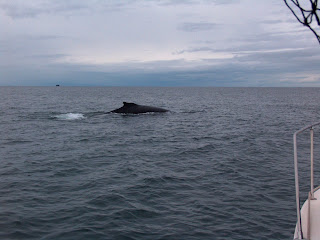 Homer has a very large moose population which can become more apparent in the winter after the leaves have fallen. The colder weather causes the moose and other local wildlife to change their behavior somewhat. Many of the birds migrate to warmer climes but others stay through the winter and even become more visible. Probably the most often viewed winter wildlife around Homer are the bald eagles which hangout on the end of the Spit where they are fed daily by "the Eagle Lady", 85 year old Jean Keene. Jean lives on the Spit and has been feeding eagles since the early 1970's. Naturally, this practice became controversial as other people began feeding eagles, too. So the city of Homer ruled that feeding the birds is a "no-no"- except for Jean who is "grandmothered" into the practice until 2010. The daily feedings between Dec. 20 and April 1, are a real opportunity for photographers who come from all over the world to hang out of their car windows to capture these scavengers on digicards.
Homer has a very large moose population which can become more apparent in the winter after the leaves have fallen. The colder weather causes the moose and other local wildlife to change their behavior somewhat. Many of the birds migrate to warmer climes but others stay through the winter and even become more visible. Probably the most often viewed winter wildlife around Homer are the bald eagles which hangout on the end of the Spit where they are fed daily by "the Eagle Lady", 85 year old Jean Keene. Jean lives on the Spit and has been feeding eagles since the early 1970's. Naturally, this practice became controversial as other people began feeding eagles, too. So the city of Homer ruled that feeding the birds is a "no-no"- except for Jean who is "grandmothered" into the practice until 2010. The daily feedings between Dec. 20 and April 1, are a real opportunity for photographers who come from all over the world to hang out of their car windows to capture these scavengers on digicards.
Jean feeds fish scraps from the processing plant to the eagles which seem to calmly wait for their turn at the trough. Normally these birds would be searching out other prey such as these mallard ducks which remain in the Bay area all winter. When strong northeast winds blow down the bay these ducks gather in Mud Bay to shelter from the storm. They sit so still on the ice that they appear to be frozen in place.
Mud Bay is also a favorite wintering area for many of the 1,800 sea otters that inhabit the Bay. They float on their backs with their heads and back feet poking out of the water and often use their furry bellies as a table while they eat clams from the muddy bottom. Sometimes sea gulls bob around the otters hoping to steal a morsel of clam right off their tummies!
Other marine mammals are also visiting the Bay right now that we don't see so much in the summer. Humpback whales pass by from northern waters on their way to Hawaii and Baja. These 40 foot leviathans spend some time feeding nearby and occassionally we see their spouting exhalations from our living room windows. Persons in small motorized craft really have to watch for the whales.

See his little head just to the left of Linda's boat. They look a lot bigger when they haul themselves out of the water to rest on the beach....







 Our Kantishna River Homestead Cabin
Our Kantishna River Homestead Cabin


 The Beach at Haystack Rock....
The Beach at Haystack Rock....















